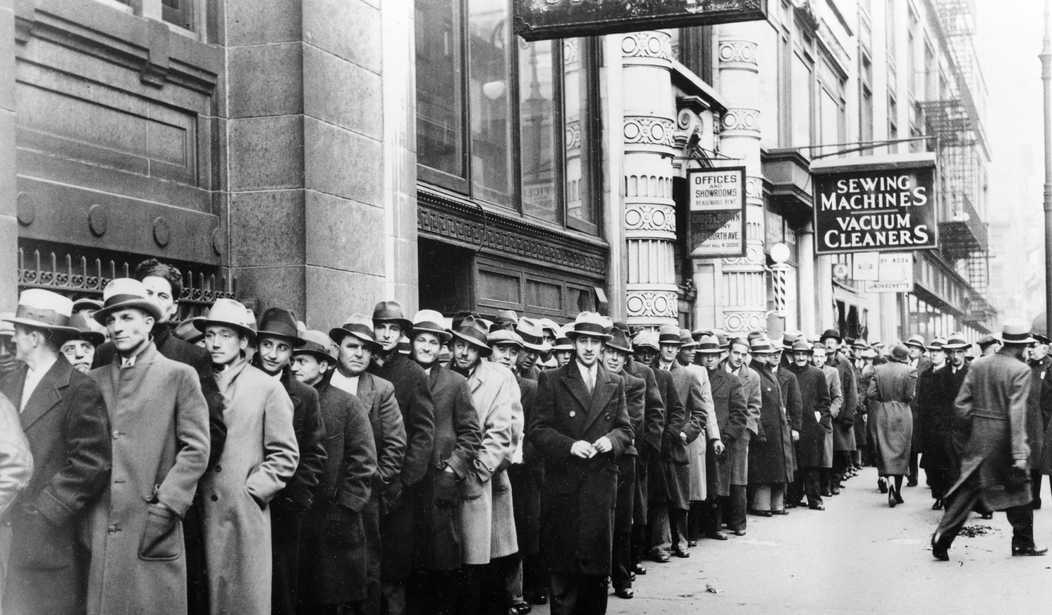Economists at the Federal Reserve’s St. Louis office have run the numbers and they’re looking pretty grim.
The Fed estimates that 47 million Americans will lose their jobs during the pandemic, which translates into an unemployment rate of 32.1 percent. The Fed’s report also said that up to 67 million jobs are at risk during the shut down.
There are a few caveats to those numbers:
There are a couple of important caveats to what Faria-e-Castro calls “back-of-the-envelope” calculations: They don’t account for workers who may drop out of the labor force, thus bringing down the headline unemployment rate, and they do not estimate the impact of recently passed government stimulus, which will extend unemployment benefits and subsidize companies for not cutting staff.
The report highlights the fragile nature of the economy and its susceptibility to shocks like the pandemic.
The central part of Faria-e-Castro’s compilations comes from previous Fed research showing 66.8 million workers in “occupations with high risk of layoff.” They are sales, production, food preparation and services. Other research also identified 27.3 million people working in “high contact-intensive” jobs such as barbers and stylists, airline attendants, and food and beverage service.
The paper then took an average of those workers and estimated a loss of just over 47 million positions. That would bring the U.S. unemployment rolls to 52.8 million, or more than three times worse than the peak of the Great Recession. The 30% unemployment rate would top the Great Depression peak of 24.9%.
The Depression unemployment numbers don’t tell the whole story, of course. Any discussion of that period must include the deflation of currency which prolonged the slump. And there have been other “panics” and “depressions” in our history where unemployment numbers were very bad. The Panic of 1873 was partially caused by an Equine Flu epidemic that killed almost every horse in America. The New York Stock Exchange simply stopped trading for 10 days, it got so bad.
But working for wages in those days was still fairly unknown. Most Americans still worked for themselves. That changed with the rise of industrialized capitalism, which meant that subsequent panics hit the working class particularly hard.
This downturn will be short-lived, says the Fed.
During a CNBC interview last week, Bullard said the jobless number “will be unparalleled, but don’t get discouraged. This is a special quarter, and once the virus goes away and if we play our cards right and keep everything intact, then everyone will go back to work and everything will be fine.”
Whistling past the graveyard? Everything points to him being right. You can bet that Congress will devise another huge stimulus to jump-start the economy when the time comes.
Probably just in time for the November election.










Join the conversation as a VIP Member